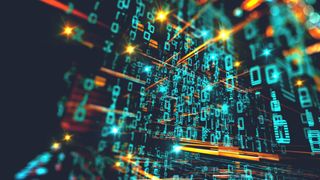How new data technologies are being used to combat the global pandemic
Daily routine has been disrupted and business realities have changed overnight

We are all glued to our screens tracking the progress of the ongoing pandemic. Our daily routine has been disrupted, and business realities have changed overnight. Factories are converted to produce respirators, restaurants are limited to take away, retailers to online sites, and supermarkets are running out of supplies due to panic buying and broken supply chains.
Many countries are still struggling to find the best way to combat the virus. But on the bright side, there have been new innovations that collect and leverage data to protect citizens from the pandemic. New solutions powered by data including electronic surveillance solutions and machine learning models are now in place to prevent the spread of the disease.
- Working from home: the mouse, monitor, keyboard and router you need
- Check out our list of the best VPN services on the market
- The best free services to help your business through the global pandemic
Here are just a few examples:
Identify sufferers
Since test kits are in short supply and test results can take several days, new methods have been developed for faster diagnosis. China has developed cameras and goggles armed with thermal imaging to identify people with fevers in a crowd. San Francisco-based Kinsa Health has sold or given away more than one million smart thermometers to record fevers in near real-time, both for home use and in medical facilities. Having millions of data points allows Kinsa to produce daily maps showing which counties are seeing spiking fevers.
Track movement
Governments are accessing CCTV footage, GPS tracking data from phones and cars, credit card transactions, immigration entry information, and other personal details of citizens to track movements of infected people. In South Korea, legislation gave the government authority to collect mobile phone, credit card, and other data from infected individuals and share this information on social media to warn people that they may have been exposed. It was recently reported that the US government is in “active talks” with tech companies including Facebook and Google about using location data to track movements of people infected by the virus.
Are you a pro? Subscribe to our newsletter
Sign up to the TechRadar Pro newsletter to get all the top news, opinion, features and guidance your business needs to succeed!
Enforce quarantine
Governments have taken steps to monitor people in quarantine, including forcing them to wear devices that track their movements, and notify them in the event that they wander beyond their restricted areas. Starting March 19th, The Hong Kong government required arriving passengers to wear an electronic wristband with instructions to walk around the house so that technology can precisely track the boundaries of their living space. The South Korean Ministry of the Interior rolled out the "Self-Quarantine Safety Protection" app, used to monitor roughly 30,000 people who were told to stay at home for two weeks. If a person takes their phone out of a restricted area, an alert will go off and a case officer will be notified.
Record contacts
Singapore has made available an app, Trace Together that exchanges short-distance Bluetooth signals when users are near one another. Records of those encounters, including the duration, are stored in their respective phones for 21 days and used to identify people who were in close proximity and may have been potentially infected including family members, colleagues, and fellow travelers.
Despite the fast development of these solutions, there are still technical limitations. Data scientists are challenged with accessing, preparing and analysing their massive and growing volumes of data. Insights that are highly time sensitive, for example sensing when a quarantine has been breached, can take hours instead of minutes. In order to feed different types of data into a model, including CCTV images and credit card transactions, data preparation may take too long, slowing down the processing. Especially now when rapid analysis of data has the potential to save lives, data scientists should consider GPU-based data management solutions and other highly efficient access and storage methods to analyse very large data stores for time-sensitive insights.
The coronavirus has triggered a chain of innovation, powered by huge volumes of data. All this data needs to be rolled up, ingested, analysed, and shared in a timely way so we can take action to help prevent the spread of the disease. By using data to track the disease and model its behaviour, we can hopefully make the coronavirus pandemic an inconceivable event of the past.
David Leichner is CMO at SQream
- Here's our list of the best cloud computing services on the market
David Leichner is CMO at SQream. Hehas over 25 years of marketing and sales executive management experience garnered from leading software vendors including Information Builders, Magic Software and BluePhoenix Solutions.
He is a strategic and tactical marketing, online (SEO, PPC, email, blogs, PR, analytics) and business network marketing, brand and reputation building, positioning and repositioning of products and services
He is a C-level sales, business development, partner and distribution management, his specialities are: International market and network development and building of long term business relationships

